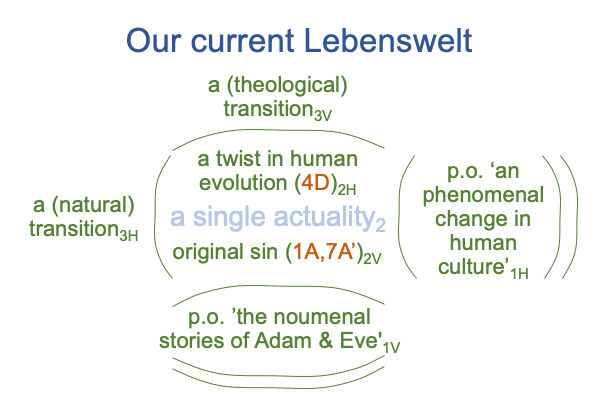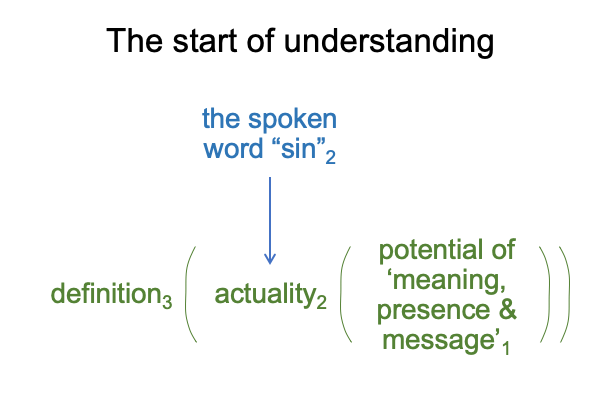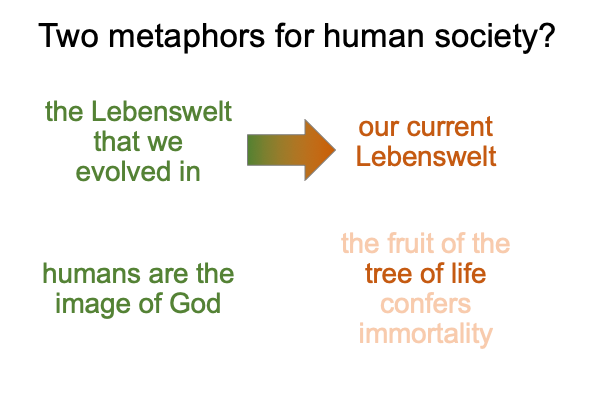Looking at Loren Haarsma’s Book (2021) “When Did Sin Begin” (Part 12 of 21)
0084 Chapter one, titled, “Scripture, Science and the Holy Spirit”, and chapter seven, “The Doctrine of Original Sin through Church History”, may be labeled A and A’. Once again, combining numbers and signifiers, 1A and 7A’ bookend the 2B:3C:4D:5C’:6B’ pattern of chapters two through six.
0085 The introduction opens the topic of general and special revelation.
0086 Chapter one of Haarsma’s book (A) describes the difficulty of these two types of revelation in our modern age. Science cannot dictate how we interpret scripture. Theology cannot dictate how to conduct science. Nevertheless, theology and science investigate a single reality.
If science describes only actualities2, then theology must be offering normal contexts3 and potentials1. If science only concerns phenomena, then theology must be offering insights into their noumenon. In this, theology crosses science.
0087 Science cannot situate revelation. Theology cannot situate science. Yet, both belong to a single actuality. This is why the relational structure of the intersection lies just below the surface of Haarsma’s work.
0088 In chapter one (A), Haarsma offers four principles for interpreting Scripture.
First, translate biblical words in their grammatical context. This steps into the second principle.
Second, consider each scriptural passage as part of the Biblical whole. The parts work in concert with the whole.
Third, figure out the literary genre of each passage. This elevates the fourth principle.
Fourth, look at the cultural and historical scope of the original author(s). All Biblical authors scope into the ancient Near East.
0089 The first two principles concern the elucidation of meaning, presence and message of the Biblical text.
The second two principles hold a mirror to the other actuality in the third intersection, the twist in human evolution2H.
On the one hand, Genesis 2:4-11 holds something in common with all other origin stories of the ancient Near East.
It does not envision humans earlier than their recent creation in our current Lebenswelt.
It does not see the Lebenswelt that we evolved in.
It cannot look beyond the first singularity.
0090 On the other hand, of all the currently known literature of the ancient Near East, only one pictures humankind in a setting earlier than the first singularity. That is the first chapter of Genesis, the Creation Story.
Many see the Creation Story as an anomaly.
Why?
Genesis 1 reads like an evolutionary progression, but it is really the building of the tent of the heavens and earth.
Hmmm.
0091 What does this imply?
Is there a reason why Genesis 2:4-11, along with all the other origin stories of the ancient Near East, cannot see past the start of our current Lebenswelt?
There is a twist in human evolution.
The twist corresponds to the start of original sin.
0092 Our current Lebenswelt is not the same as the Lebenswelt that we evolved in.



